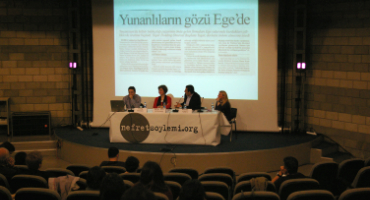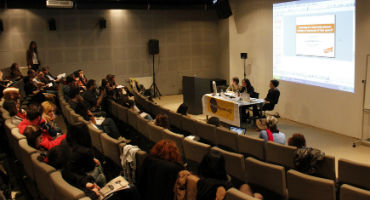In the scope of the “Media Watch on Hate Speech Project”, we publish periodical reports every four months based on the findings of our media monitoring work. Our reports illustrate a general picture of hate speech employed by the Turkish print media, including statistical information on the groups that were targeted, where hate speech was encountered, how hateful discourse was constructed, the events related with the production of such discourse etc. in the period analysed, together with sample news articles and columns subjected to discourse analysis.
We have so far published and disseminated ten reports to NGOs, universities, newspaper editors and related institutions such as the Press Council and Journalists’ Association of Turkey. The media watch report covering the months of September, October, November, and December 2012 is our third report that we also translated into English.
September - December 2012 Report
The Media Watch on Hate Speech Periodical Report covering the period between September and December 2012 has been published. The report includes three sections; the first section is based on news stories and columns that feature hate speech against individuals and groups based on their ethnic and religious identities, the second section is based on content targeting LGBT individuals and women, and finally the third section is based on content that could not be evaluated in the scope of “hate speech”, but still was considered problematic as they targeted certain institutions and individuals that work on human rights issues in Turkey.
In the last 4 months of 2012, the number of news stories and columns identified as containing hate speech remained approximately the same with the previous periods. Majority of hate speech took place in the national press and again, similar to the previous periods, columns constituted the genre where hateful discouse was encountered most frequently.
In the period covering the months September - December 2012, Jews and Armenians were the most frequently targeted groups followed by Christians and Turkey Greeks. Along with ethnic and religious groups, certain individuals and institutions also turned into targets of hate speech in this period. News stories and columns containing hate speech did not focus on a specific subject, however certain events in the political agenda constituted a context for the production of such discourse. These events included Turkey’s relations with NATO, its position in the “Greater Middle East Project”, removal of the statement “Guarding and preserving the Turkish Republic” from the military duties listed in the Turkish Armed Forces’ military code, Gaza attacks, release of the Islamophobic movie “Innocence of Muslims” etc. It was remarkable that the groups targeted by hate speech were often associated with the Kurdish question and terror and were represented as the source of this problem. The discourse that can be summarized as “No harm would come from the Muslim Kurd, PKK is indeed an Armenian organization” frequently targeted Christians and Jews. In the analyzed period, hate speech targeting Kurds was relatively low in quantity. However, it shoud be noted that this does not point to a different approach to the Kurdish population but to a different type of discourse more professionally constructed, hiding the underlying hate. In most of the content referring to Kurds, there was a distinction made between the “good Kurds” and “others”. The association drawn between the pro-Kurdish BDP (Peace and Democracy Party) and terrorist activities was yet another remarkable feature of these articles. In other words, it should be noted that even though Kurds were not directly targeted by hate speech, the political party representing the Kurds was the object of prejudicial and hateful discourse.
In the content tageting LGBT individuals, it was observed that homosexuality was described as “perversion”, “abnormality”, “ugliness” and the like. In some of the analyzed content, homosexuality was even seen as equivalent to incest. On the other hand, the articles referring to transexuals were constructed with the aim of associating trans individuals with crime.
Arslan Tekin’s columns that regulary took place in the Yeni Çağ Daily were given place in the “Media Critique” section of the report and were not included in the statistical analyses. These columns were exposed with the aim of showing how hateful discourse is constructed through individuals and institutions.
Please click here to read the other reports.



